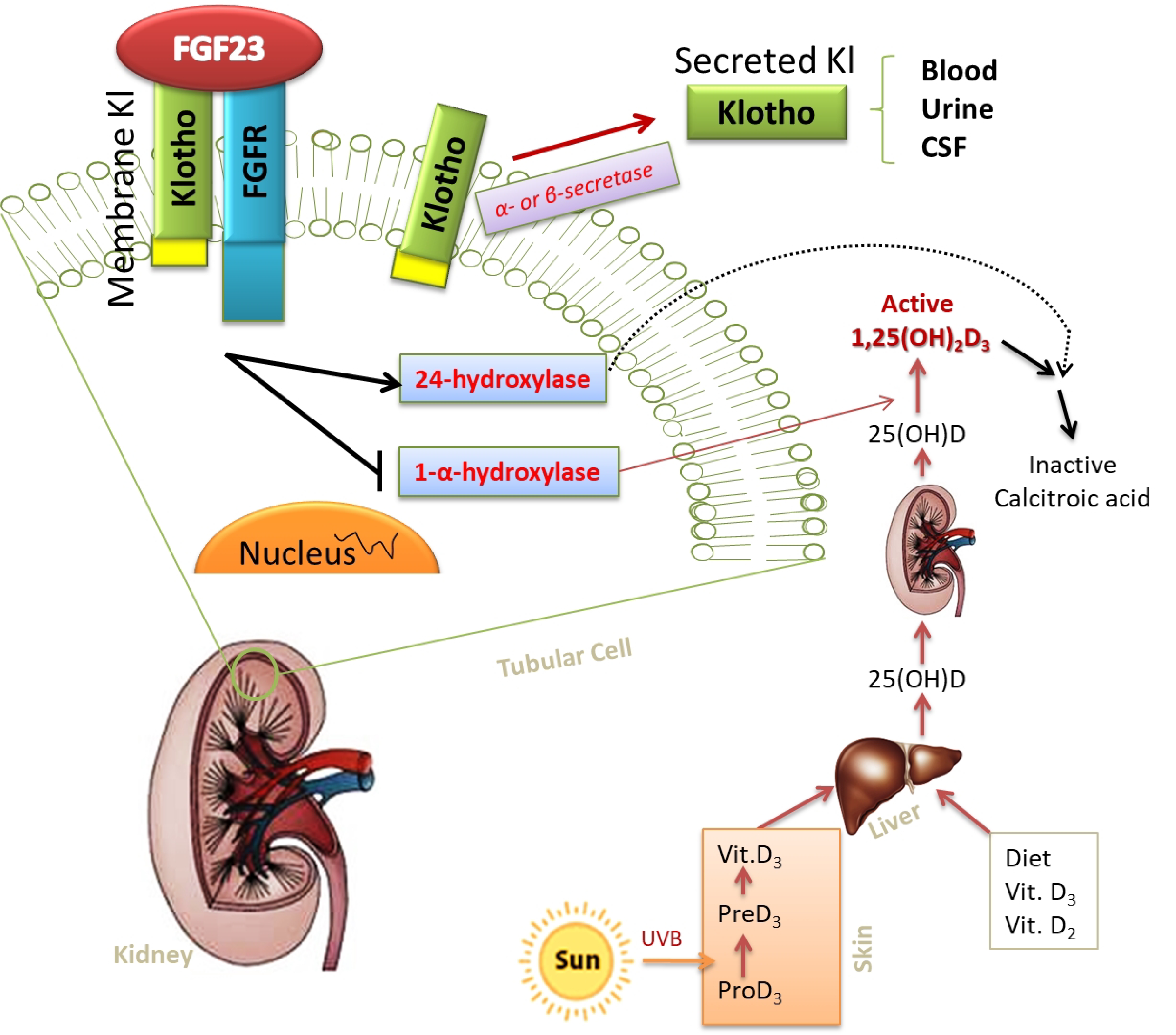Fig. 1. Schematic diagram indicating the main functions of FGF23/Klotho/FGFR complex in vitamin D production [9, 15]. The complex of membrane Klotho-FGFR forms a high-affinity receptor for FGF23 that uses this binary complex to mediate intracellular signaling, including vitamin D metabolism. By serving as an obligate co-receptor for FGF23, Klotho participates in vitamin D metabolism. The biologically active form (1,25(OH)2D3) of vitamin D plays many important roles in the body, including controlling the mineral metabolism and influencing brain health. The ectodomain shedding, between KL1 and KL2 domains, of membrane Klotho by α- and β-secretases causes the release of the secreted Klotho that can be predominantly detected in blood, urine, and cerebrospinal fluid. FGF23/Klotho regulates the level of the active form of vitamin D (1,25(OH)2D3) in circulation. This effect can be reached either by downregulating the expression levels of enzyme 1-a-hydroxylase that catalyzes the synthesis of 1,25(OH)2D3, or by upregulating the enzyme 24-hydroxylase that catalyzes the breakdown of 1,25(OH)2D3 into inactive calcitroic acid. See the figure and the text for further details.
